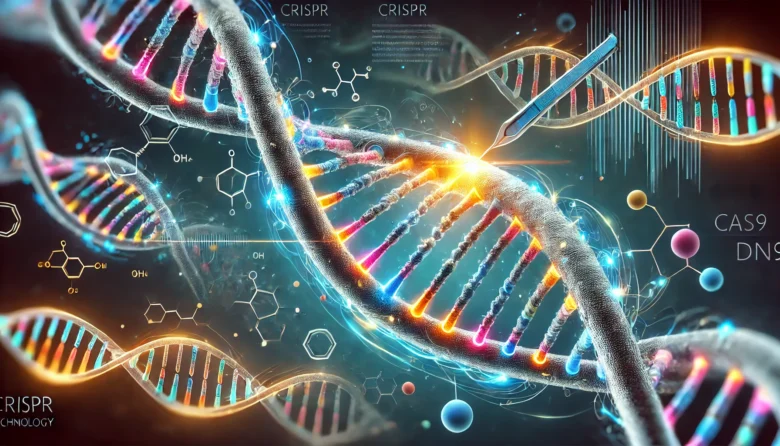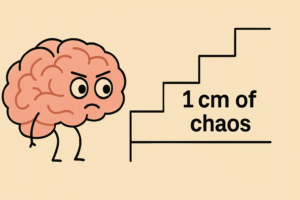Imagine a world where genetic diseases could be cured with a simple tweak in your DNA. Or crops resistant to drought and pests could be developed rapidly to feed billions. These ideas aren’t just science fiction anymore—they’re becoming a reality thanks to CRISPR (Clustered Regularly Interspaced Short Palindromic Repeats) and gene editing technology. In this blog, we’ll explore what CRISPR is, how it works, and its transformative potential in fields like medicine and agriculture.
What Is CRISPR and How Does It Work?
At its core, CRISPR is a tool that allows scientists to edit DNA with incredible precision. Discovered in bacteria, CRISPR originally functioned as a defence mechanism against viruses. Bacteria use CRISPR to “remember” viruses they’ve encountered by storing a snippet of their DNA. If the same virus attacks again, the bacteria can recognize and neutralize it.
Scientists adapted this natural system into a revolutionary gene-editing tool. Using CRISPR, researchers can locate a specific section of DNA in any organism and make precise changes—adding, removing, or altering genetic material. The system uses two key components: Cas9 (a protein that cuts DNA) and a guide RNA (which directs Cas9 to the right spot in the genome). Think of it as a molecular pair of scissors guided by GPS to cut exactly where needed.
The Medical Revolution: CRISPR in Healthcare
One of the most exciting aspects of CRISPR is its potential to treat genetic diseases. Genetic disorders such as sickle cell anaemia, cystic fibrosis, and muscular dystrophy result from single gene mutations, making them ideal targets for CRISPR-based therapies.
In 2020, a breakthrough study treated patients with sickle cell anaemia using CRISPR, marking one of the first successful clinical trials of gene editing in humans. The patients’ blood cells were edited to produce normal haemoglobin, effectively curing the disease. Imagine the potential here—thousands of genetic disorders, previously untreatable, could now have a solution!

Another remarkable case is the treatment of leukaemia in children. Researchers used CRISPR to edit immune cells, turning them into cancer-fighting warriors. These modified cells, known as CAR-T cells, seek out and destroy cancerous cells, giving renewed hope to patients who have exhausted conventional treatment options.
However, it’s important to note that CRISPR in medicine is still in its early stages. While the potential is immense, there are also challenges. One concern is the risk of “off-target” effects—accidental changes in unintended parts of the genome, which could lead to new health problems. As research advances, scientists are working hard to minimize these risks.
CRISPR and Agriculture: Feeding the Future
In addition to healthcare, CRISPR has been a game-changer in agriculture. Traditional plant breeding techniques are time-consuming and imprecise. But with CRISPR, scientists can rapidly and accurately develop crops that are more nutritious, resistant to disease, or better suited to harsh climates.
An example of CRISPR’s agricultural use is the development of rice strains that are resistant to bacterial blight, a prevalent disease that harms crops in Asia. Another example is the development of drought-resistant corn, which is vital in regions facing water shortages. With CRISPR, we could soon see crops that not only yield more but also have longer shelf lives and are more sustainable to grow.
One fascinating experiment involved modifying tomatoes to make them spicier by editing their genes to boost capsaicin levels. While this might seem more like a novelty, it showcases the incredible versatility of gene editing in agriculture.
Ethical Considerations: Playing God?
While CRISPR opens doors to incredible possibilities, it also raises important ethical questions. The ability to alter the human genome, especially in ways that could be passed down to future generations, brings up the concept of “designer babies.” Should we allow gene editing to change traits like height, intelligence, or appearance? Could CRISPR be used to create inequalities, with only the wealthy able to access genetic enhancements?
In 2018, a Chinese scientist sparked global controversy by announcing the birth of the first gene-edited babies, who were altered to resist HIV. This revelation led to widespread condemnation from the scientific community, emphasizing the need for global guidelines and strict regulation of CRISPR use in humans.
Ethical concerns also extend to the environment. Editing the genomes of plants and animals could have unintended consequences for ecosystems, potentially leading to the loss of biodiversity or the creation of invasive species.
Conclusion: The Future of CRISPR
CRISPR is still in its infancy, but its potential is mind-blowing. From curing genetic diseases and transforming agriculture to raising profound ethical questions, the science behind CRISPR and gene editing will continue to shape the future of humanity. While we are still far from fully realizing CRISPR’s capabilities, one thing is clear: this technology is here to stay.
As research progresses, it’s crucial to balance scientific innovation with ethical considerations, ensuring that the power of gene editing benefits society as a whole. What do you think? Should we fully embrace CRISPR, or should we tread cautiously as we navigate this new frontier in science?
Author’s Note:
I hope this blog has helped you better understand CRISPR and its role in gene editing. It’s a thrilling field that could revolutionize many aspects of our lives, but it’s also one that comes with significant moral responsibility. As we move forward, it’s important to stay informed about the benefits and risks of such powerful technologies.
G.C., Ecosociosphere contributor.
References and Further Reading:
- CRISPR Technology: What It Is and How It Works – Harvard University
- Ethics of Gene Editing – National Institutes of Health
- CRISPR: Harnessing the Power of Genetic Editing for a Healthier Tomorrow | Tips for Thought. https://tipsforthought.com/crispr-harnessing-the-power-of-genetic-editing-for-a-healthier-tomorrow/
- How Genetic Engineering Revolutionizes Agriculture. https://scienceofbiogenetics.com/articles/exploring-the-impact-of-genetic-engineering-in-modern-agriculture-revolutionizing-crop-yield-nutrition-and-sustainability





Comments
Your blog is an oasis in a world filled with negativity and hate Thank you for providing a safe space for your readers to recharge and refuel